Have you heard? We just launched our NEW Tummy Butter! Our beloved belly butter is truly not your average dream cream. We just took it up another notch by making some changes that make it more functional and feel better on your skin.
What's New:
Tummy Butter now features an improved formula while retaining its signature powerhouse ingredients:: Cocoa butter, Shea butter, Seabuckthorn, Tamanu, and Rosehip oils.

What has Changed?
- Fragrance-Free Formula: We’ve removed orange essential oil to minimize the risk of irritation for sensitive skin and to accommodate expectant mothers who may experience smell aversions, particularly in the first trimester. The result? A product that is nearly fragrance-free, perfect for sensitive noses!
- Updated Preservative: We replaced sodium hydroxymethylglycinate with Phenoxyethanol (less than 1%), which is OBGYN-approved and safe for all skin types. This transition ensures the longevity and safety of the product without compromising on effectiveness.You can rest assured that we only use the highest quality ingredients in our products.
What Hasn’t Changed?
- Trusted Ingredients: We continue to source all our ingredients from reputable suppliers, ensuring the highest quality in every jar.
- Proven Effectiveness: The effectiveness of Tummy Butter in preventing and reducing the appearance of stretch marks remains intact.
- Powerful Ingredients: The formula still includes the same nourishing ingredients: Cocoa Butter, Shea Butter, Sea Buckthorn Oil, Tamanu Oil, and Rosehip Oil. You may notice that it is lighter in color. This is because the Sea Buckthorn berry gives Tummy Butter its bright yellow/orange color. Due to the time of year, it is sourced and crop outcomes the color will vary with each batch. This batch is a bit lighter but the same percentage is there.
 Like Fruits & Veggies?
Like Fruits & Veggies?
Yes, it is similar to comparing fruits and vegetables you purchase at the grocery store- they vary each time, even if they are from the same store/farm/crop. This might explain why the final formula can look, feel, and smell differently. This product is packed with the same powerhouse ingredients and is just as effective as our previous formula.
What IS and is NOT in our Tummy Butter:
- Theobroma Cacao (Cocoa) Seed Butter: Known as “food of the gods,” cocoa butter is derived from cacao seeds, celebrated as the key ingredient in chocolate. In skincare, cocoa butter acts as a rich emollient, ideal for moisturizing and softening dry skin areas. Its fatty acids—oleic (35%), stearic (34%), and palmitic (25%)—offer nourishing properties, while antioxidant-rich vitamin E and polyphenols contribute to skin health and protection.
- Butyrospermum Parkii (Shea) Oil: Extracted from shea nuts, this oil is deeply hydrating, helping to nourish and protect the skin.
- Prunus Amygdalus Dulcis (Sweet Almond) Oil: Contains beneficial fatty acids—primarily oleic (55-86%) and linoleic (7-35%)—and vitamins E and B, which help in softening, moisturizing, and soothing skin. Its light texture and high nutrient profile make it ideal for various skincare formulations.
- Cetearyl Olivate and Sorbitan Olivate: These emulsifiers blend oil and water, creating liquid crystal structures that mimic the skin’s natural lipid layers. Together, they provide moisturizing, barrier-repairing, and soothing effects, enhancing overall skin hydration.
- Caprylic/Capric Triglyceride: A smooth, lightweight emollient derived from coconut oil and glycerin. Known for its skin-softening qualities, it’s clear, odorless, non-greasy, and suits all skin types. Its popularity comes from its ease of formulation and compatibility with other ingredients.
- Cetearyl Alcohol: A fatty alcohol blend that imparts a soft, smooth feel and helps thicken creams and lotions. It stabilizes emulsions without being drying, making it suitable for sensitive and dry skin types.
- Cetyl Alcohol: Another fatty alcohol that serves as an emollient, thickener, and co-emulsifier. Often sourced from coconut or palm oils, it provides a smooth texture and helps bind oil and water in skincare formulations.
- Glyceryl Stearate: This waxy, solid ingredient helps oil and water mix while giving products body. Derived from vegetable oils, it’s environmentally friendly and leaves a smooth feel on the skin.
- Hippophae Rhamnoides (Sea Buckthorn) Fruit Oil: Extracted from the sea buckthorn berry, this oil has a unique composition, including Omega-7 and palmitic acid. Rich in antioxidants like vitamin E, beta-carotene, and lycopene, it provides moisturizing, protective, and skin-soothing benefits, lending a natural orange hue to products.
- Tocopheryl Acetate: A stable form of vitamin E, commonly used for its antioxidant properties. It’s found in a wide range of skincare products, where it helps protect the skin and improve product stability.
- Aloe Barbadensis Leaf Juice: Known for its healing properties, aloe vera is a natural moisturizer and anti-inflammatory agent. It contains salicylates, polysaccharides, and magnesium lactate, which help soothe, hydrate, and support skin regeneration.
- Aleurites Moluccana Seed Oil (Kukui Oil): Traditionally used in Hawaii to relieve sunburn and inflammation, kukui oil is rich in linoleic and linolenic acids. Its anti-inflammatory and wound-healing properties make it excellent for dry or sensitive skin.
- Calophyllum Inophyllum Seed Oil (Tamanu Oil): This Polynesian oil, rich in unique calophyllic acid, is renowned for its regenerative and healing properties. It’s commonly used to soothe inflammation, treat scars, and promote skin repair.
- Limnanthes Alba (Meadowfoam) Seed Oil: Known for its unique long-chain fatty acids (eicosenoic and docosenoic acids), this highly stable oil provides a soft, non-greasy feel. Its rapid absorption and similarity to jojoba oil make it ideal for skin and hair care.
- Olea Europaea (Olive) Fruit Oil: Besides its culinary uses, olive oil is rich in fatty acids like oleic, linoleic, and palmitic acids, as well as antioxidants such as polyphenols and vitamin E. It deeply moisturizes and protects, especially beneficial for dry skin.
- Persea Gratissima (Avocado) Oil: Extracted from avocado pulp, this oil is packed with oleic acid, along with vitamins A, E, and D, and penetrates deeply to nourish and hydrate. Its rich texture and antioxidant properties make it ideal for dry and mature skin.
- Rosa Canina (Rose Hip) Seed Oil: Sourced from a wild rose, this oil is high in linoleic, linolenic, and oleic acids, offering moisturizing benefits suitable for all skin types.
- Glycerin: A versatile humectant that not only hydrates but also helps maintain healthy lipid structure, protecting the skin barrier from irritation and moisture loss.
- Lecithin: A multi-functional ingredient found in cell membranes, serving as an emollient, water-binder, and emulsifier, often used to create liposomes that enhance delivery of active ingredients.
- Phenoxyethanol: A widely accepted preservative used to prevent microbial growth. Though synthetic in cosmetics, it’s safe in low concentrations (up to 1%) and gentle on the skin.
- Caprylyl Glycol: Known for its skin-softening abilities, this ingredient also enhances the efficacy of preservatives like phenoxyethanol, forming the popular preservative blend Optiphen for long-lasting freshness.
- Citric Acid: An alpha hydroxy acid (AHA) derived from citrus fruits, it provides gentle exfoliation, helping to remove dead skin cells and promote smoother, refreshed skin.
What are the main ingredients and how can they help me?
Cocoa Butter and Shea Butter are both the main ingredients in Tummy Butter.
I have always heard that cocoa butter for pregnant women is best. Is this true?
Cocoa Butter is the multitasking ingredient that hydrates and improves elasticity to combat stretch marks. Yes, all at once! It has been proven by women all over the world that it is a multitasking ingredient!
How Does Cocoa Butter Help with Stretch Marks?
When the skin is stretched rapidly, such as during pregnancy or rapid weight gain, the collagen and elastin fibers in the skin can break, leading to the formation of stretch marks. Cocoa butter is believed to help with stretch marks by hydrating the skin and improving its elasticity. This can help to reduce the appearance of stretch marks over time.
Does shea butter help stretch marks?
Shea butter is a natural moisturizer renowned for treating small skin wounds, stretch marks and sunburns. Derived from the African shea tree, the butter is a superb source of vitamins A & E. Overall, shea butter is a natural and nourishing ingredient that may help improve the appearance of stretch marks. Many Mama's have found success in using shea butter as a part of their skincare regimen. Consider incorporating shea butter into your routine to see if it can help reduce the appearance of stretch marks and improve the overall health of your skin.
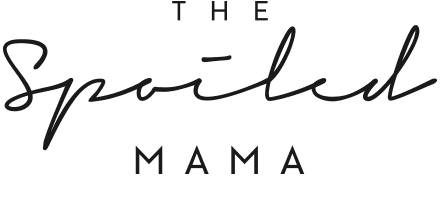
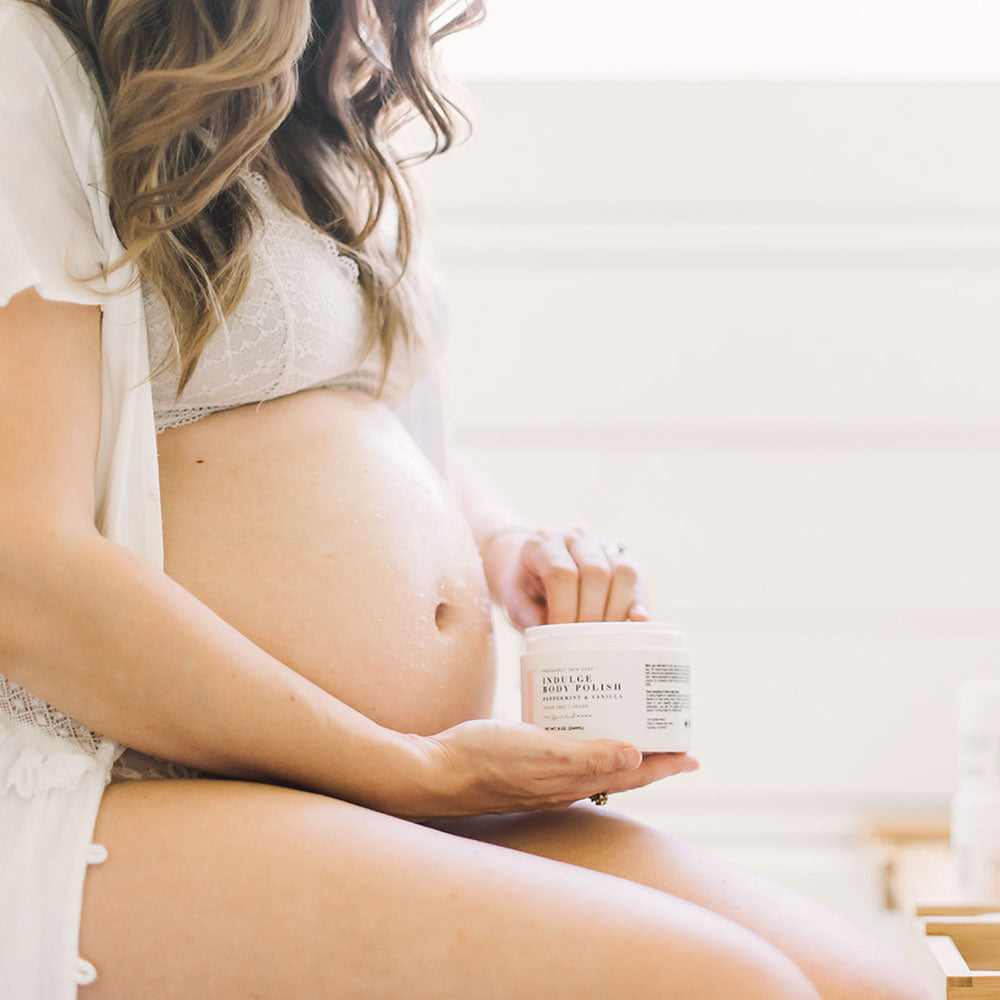
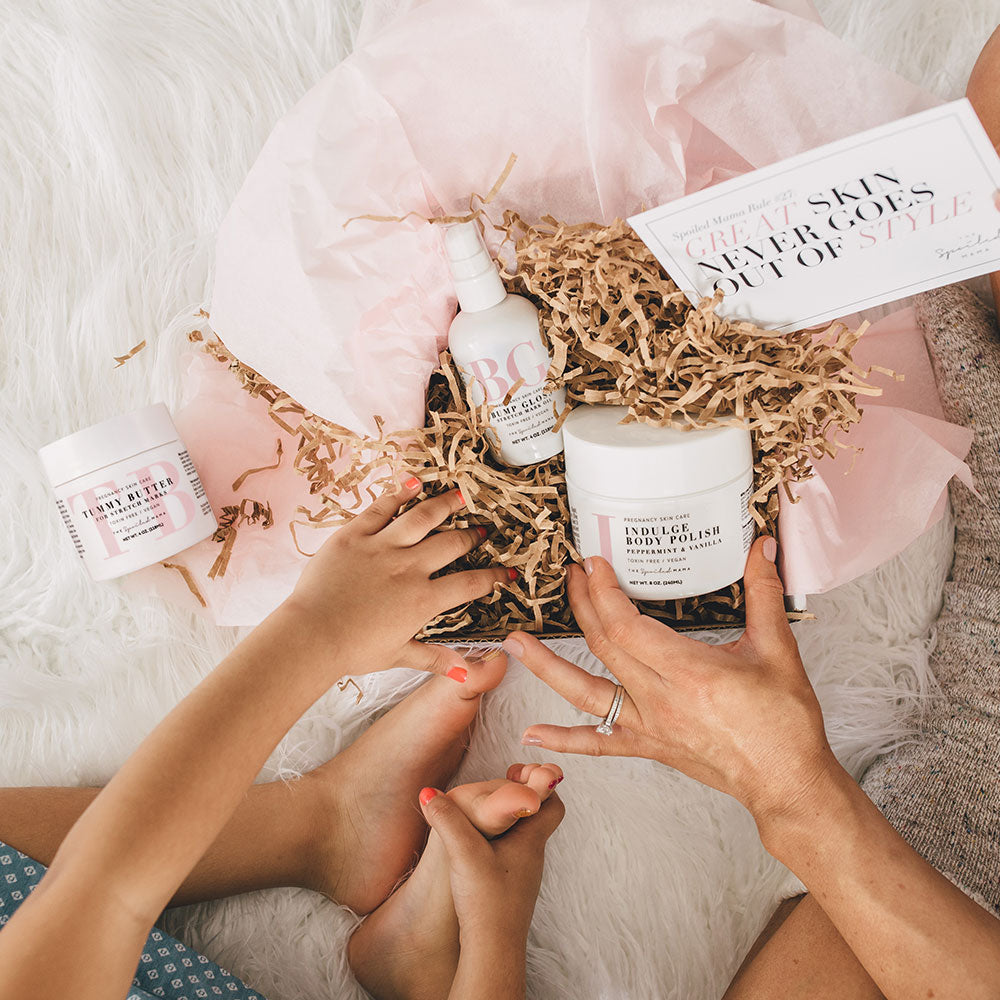
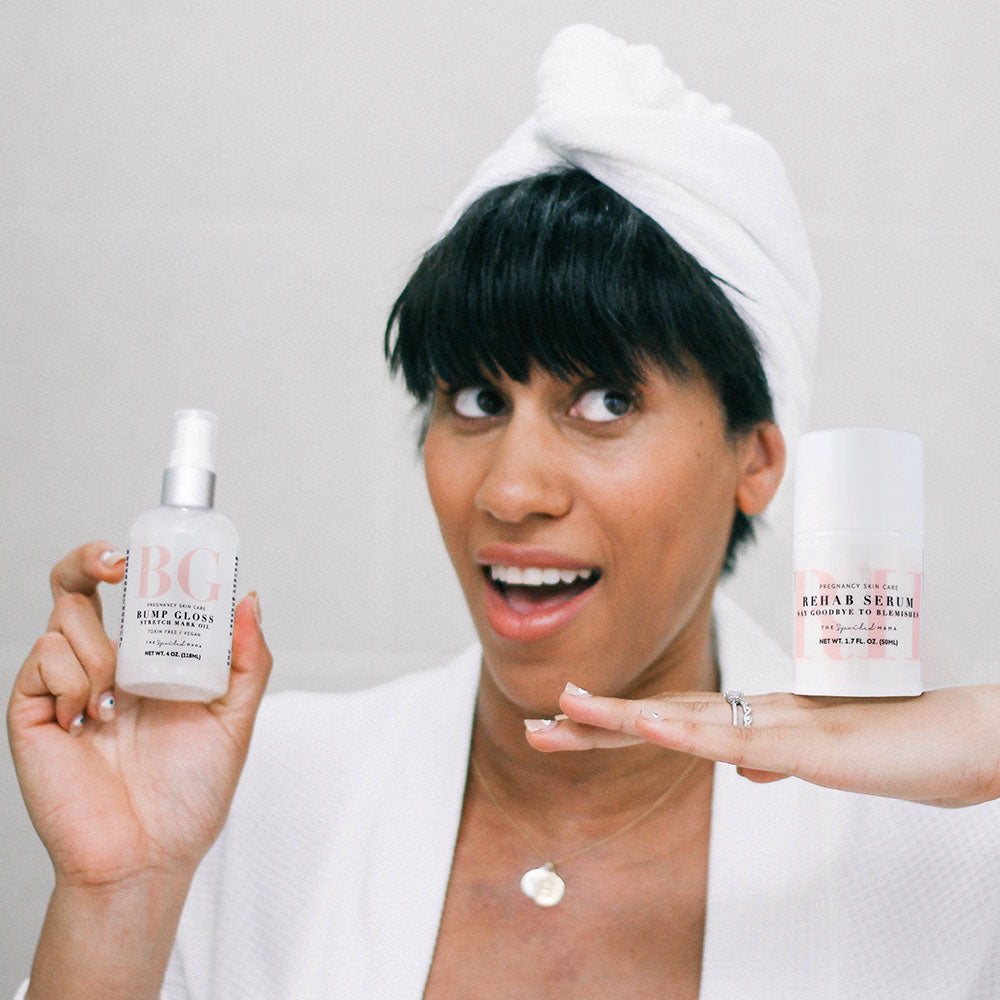
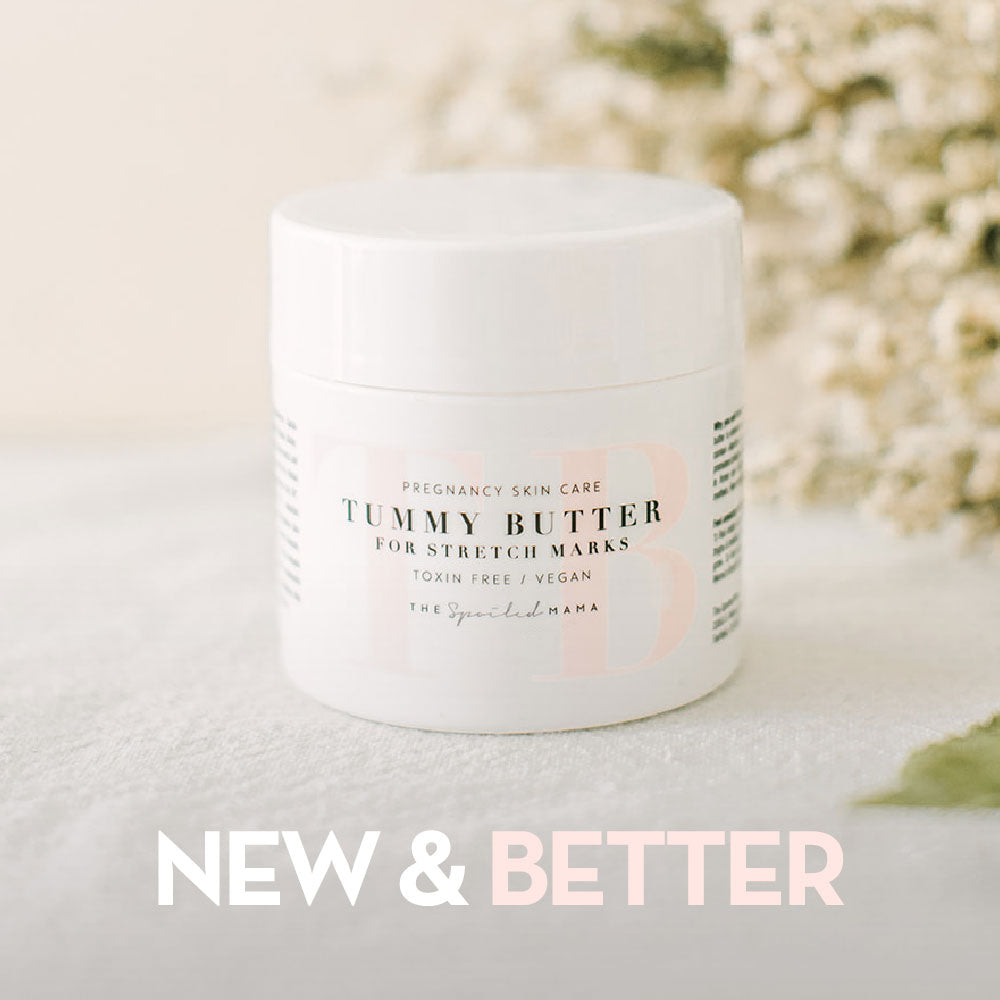

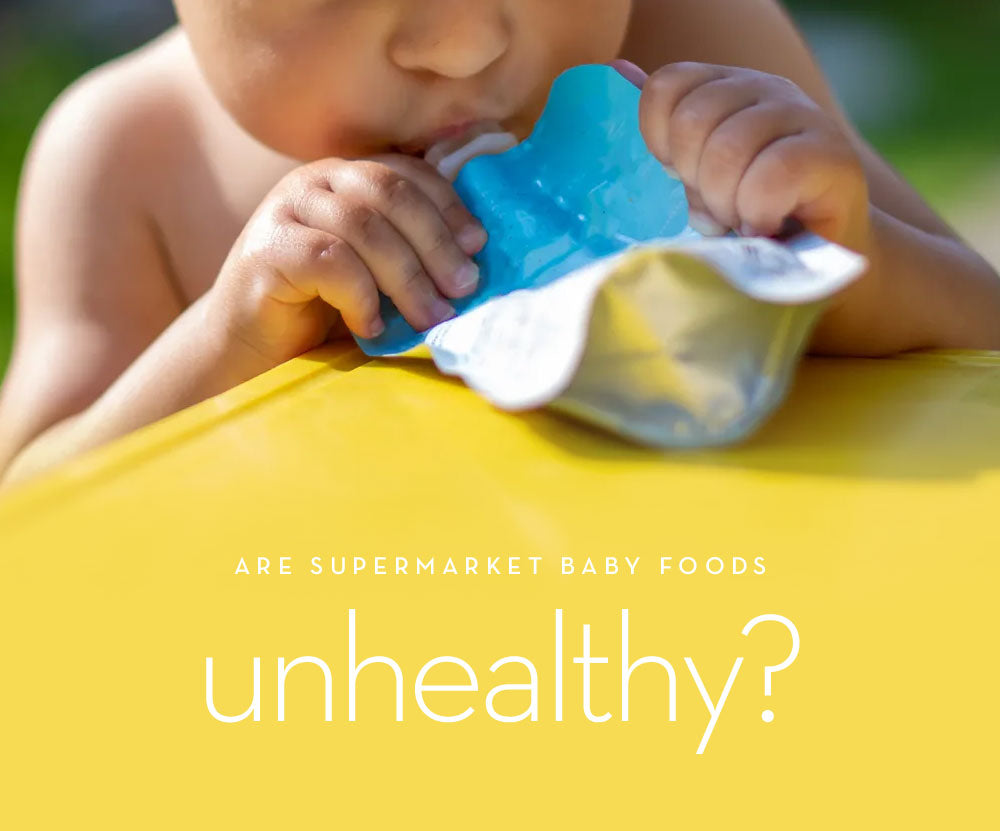
Leave a comment
All comments are moderated before being published.
This site is protected by hCaptcha and the hCaptcha Privacy Policy and Terms of Service apply.